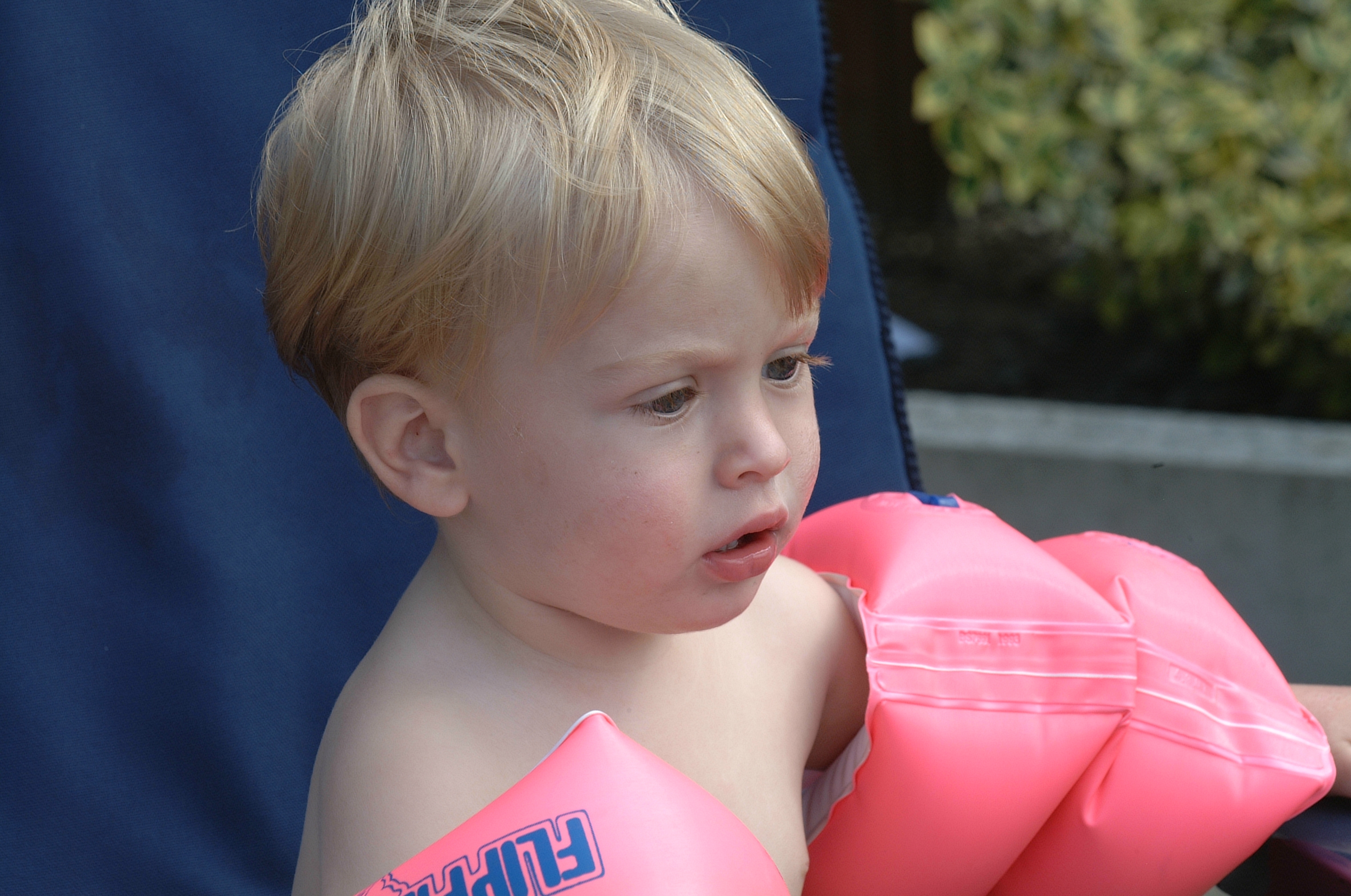-
14 June 2013
-
0 comments

Children love the pool, and swimming is a great activity for the whole family. Aside from a good time, there are many benefits that can help a child’s development; swimming promotes the development of sensory integration and motor development.
Sensory Integration:
We are always taking in information. In a research article, a mother of a child with sensory processing disorder clearly identified what our senses do for us:
Our sense of touch (tactile sense) enables us to identify a diverse world of sensations from gently pleasurable to protectively defensive. Our sense of movement (vestibular sense) responds to body movement through space and change of head position… Body position (proprioception) is that sense which enables us to move different parts of our bodies smoothly without having to observe every action.
In order for us to interpret the sensations around us, the brain needs to organize this sensory information. This is known as sensory integration. Being in a sensory rich environment helps the development of sensory integration so that the information we take in can have meaning. The pool is a great place to be; as children learn to swim, they are surrounded by new sensations.
Motor Development:
Swimming helps children improve the strengthen their muscles and increase coordination, promoting motor development. The viscosity of water creates a resistance. To propel themselves forward, swimmers push against the resistance, thereby strengthening their muscles. In her book, Total Swim, Olympic gold medalist Janet Evans writes,
When strokes are performed correctly, the muscles lengthen and increase in flexibility. The significant repetition of strokes improves muscle endurance, and because water creates more resistance against the body than air does in land exercise, the muscles are strengthened and toned.
Furthermore, swimming can increase a child’s range of motion. The pool is the best place to get moving as it offers a comfortable anti-gravity environment. Moving against the resistance of the water offers great feedback to the sensory system that helps us better understand movement and improves coordination. Similarly, this helps the development of motor planning. Navigating through the water enables a child to become more comfortable and aware of his body, and learn that his movements have an affect. This understanding helps with motor planning, as the child can understand that his movements will determine where in the pool he will end up. He can learn the concepts of location, direction and distance.
Swimming is an activity where a child can stimulate his tactile, vestibular, and proprioceptive senses, thereby increasing the development of sensory integration. Plus, splashing around in the water is just fun!
—–
Is your child scared of the water? When a child first learns to swim it is normal for him/her to be fearful and have anxieties of getting into the water; however, proper coaching and encouragement can ease this. Just because a child is afraid of the water does not mean he/she is “not ready.” A child is never too young to learn how to swim, and the earlier you teach him/her, the easier it will be.
Ease your child into the pool. Though there are always kids who will be more adventurous and jump right in, most children need to take it slow. Use pretend play to pique your child’s interest and excite him/her to get into the water. Tell your child, “flop your legs like a dolphin”, or “pretend you are Nemo!” Then start by playing on the side of the pool or on the steps in the water. Once your child is comfortable in the water, show him/her how he/she can get his/her face wet, and teach him/her to blow bubbles. Next you can progress to having your child hold his/her body up by holding onto the wall of the pool. After he/she is able to do this, teach him/her to kick. Pretty soon your child will be pushing off the wall, and swimming into your arms.
If your child is hesitant to take all these steps, make it easier by being prepared. Bringing a drinking straw with you to the pool is a great way to show children how they can blow bubbles in the water. Often a quality pair of goggles helps a child feel more comfortable getting his/her face wet. And remember, even if you are ready to move on to the next step, your child may not be. This is a skill your child will have for life, but it takes time to obtain, so just make sure you remain patient through out the teaching process, and do not be exasperated if it takes multiple visits to the pool before your child feels comfortable splashing around in the water.
Most important: Always make sure your child is supervised by an adult no matter their age, swimming ability, or if they use a floatation device, and have fun!
Share Social
